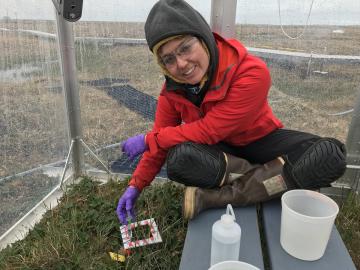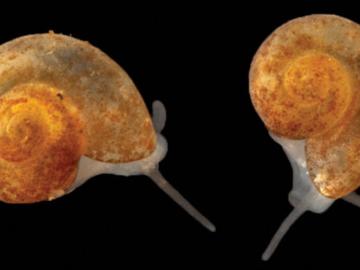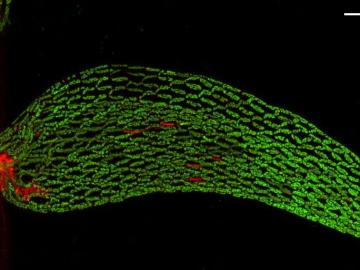
Filter News
Area of Research
- (-) Energy Science (65)
- (-) National Security (16)
- Advanced Manufacturing (7)
- Biological Systems (1)
- Biology and Environment (86)
- Biology and Soft Matter (1)
- Building Technologies (1)
- Computational Biology (2)
- Computational Engineering (2)
- Computer Science (12)
- Fusion and Fission (19)
- Fusion Energy (10)
- Isotopes (9)
- Materials (61)
- Materials for Computing (13)
- Mathematics (1)
- Neutron Science (82)
- Nuclear Science and Technology (30)
- Nuclear Systems Modeling, Simulation and Validation (1)
- Quantum information Science (4)
- Supercomputing (76)
- Transportation Systems (1)
News Type
News Topics
- (-) Biomedical (4)
- (-) Computer Science (25)
- (-) Environment (37)
- (-) Fossil Energy (1)
- (-) Materials Science (15)
- (-) Neutron Science (4)
- (-) Nuclear Energy (5)
- (-) Space Exploration (3)
- 3-D Printing/Advanced Manufacturing (46)
- Advanced Reactors (2)
- Artificial Intelligence (9)
- Big Data (7)
- Bioenergy (13)
- Biology (8)
- Biotechnology (3)
- Buildings (24)
- Chemical Sciences (4)
- Clean Water (7)
- Composites (11)
- Coronavirus (9)
- Critical Materials (4)
- Cybersecurity (14)
- Energy Storage (41)
- Grid (32)
- High-Performance Computing (6)
- Hydropower (3)
- Machine Learning (10)
- Materials (18)
- Mathematics (2)
- Mercury (2)
- Microelectronics (1)
- Microscopy (4)
- Nanotechnology (4)
- National Security (24)
- Partnerships (5)
- Polymers (6)
- Quantum Science (2)
- Security (9)
- Simulation (2)
- Statistics (1)
- Summit (4)
- Transportation (44)
Media Contacts
An international team of scientists found that rules governing plant growth hold true even at the edges of the world in the Arctic tundra.

Oak Ridge National Laboratory researchers have developed a thin film, highly conductive solid-state electrolyte made of a polymer and ceramic-based composite for lithium metal batteries.

While some of her earth system modeling colleagues at ORNL face challenges such as processor allocation or debugging code, Verity Salmon prepares for mosquito swarms and the possibility of grizzly bears.

Sometimes conducting big science means discovering a species not much larger than a grain of sand.

Each year, approximately 6 billion gallons of fuel are wasted as vehicles wait at stop lights or sit in dense traffic with engines idling, according to US Department of Energy estimates.

A novel approach developed by scientists at ORNL can scan massive datasets of large-scale satellite images to more accurately map infrastructure – such as buildings and roads – in hours versus days.

The formation of lithium dendrites is still a mystery, but materials engineers study the conditions that enable dendrites and how to stop them.

To better determine the potential energy cost savings among connected homes, researchers at Oak Ridge National Laboratory developed a computer simulation to more accurately compare energy use on similar weather days.

Students often participate in internships and receive formal training in their chosen career fields during college, but some pursue professional development opportunities even earlier.

A team of scientists found that critical interactions between microbes and peat moss break down under warming temperatures, impacting moss health and ultimately carbon stored in soil.


